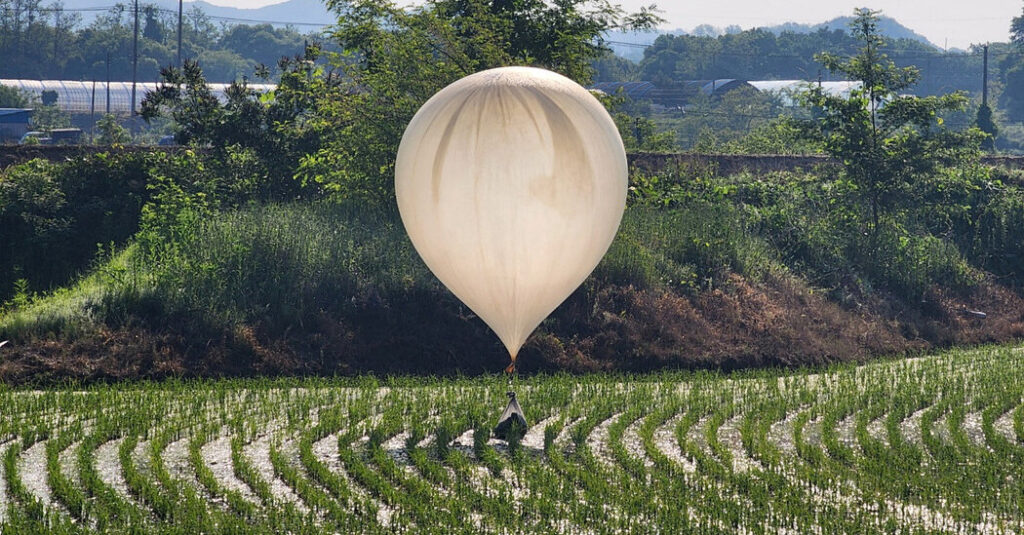North Korea has resumed an unusual action to show its anger at South Korea: dumping garbage from the sky onto the world’s most heavily armed border.
South Korea’s military said 260 balloons were spotted floating across the Demilitarized Zone, the buffer zone between North and South Korea, between Tuesday night and Wednesday. Soon, residents across South Korea, including some in the capital Seoul, reported seeing plastic bags falling from the sky.
Authorities dispatched chemical and biological terrorism response teams and bomb squads to inspect the payload. But they only found trash, such as cigarette butts, plastic water bottles, waste paper and shoes, and what looked like compost. South Korea’s military said a timer will release the trash when the balloon reaches airspace.
In recent years, North Korea has adopted an increasingly bellicose military stance. Its unusual offensive this week prompted South Korea to send mobile phone alerts to residents living near the border between North and South Korea, asking them to refrain from outdoor activities and to be on the lookout for unidentified objects falling from the sky. Some confusion arose when the alert message included the automatically generated English phrase “Preliminary Warning of Air Raid”. The government says it will address the issue.
“Such actions by North Korea clearly violate international law and pose a serious threat to the security of our people,” the South Korean military said in a statement on Wednesday. “We issue a stern warning to North Korea to stop this anti-humanitarian and dirty behavior.” Dirty action.”
The North Korean balloons arrived in South Korea just days after Pyongyang accused defectors living in South Korea of ”spreading leaflets and all kinds of dirty things” in its border counties and vowed to take “tit-for-tat action”.
“Piles of waste paper and dirt will soon be scattered across South Korea’s border areas and inland areas,” North Korea’s Deputy Defense Minister Kim Kang-il said in a statement on Saturday. “It’s a direct experience of how much effort it takes to remove them.”
During the decades of the Cold War that followed the 1950-53 Korean War, the two countries engaged in intense psychological warfare, bombarding each other with propaganda broadcasts and sending millions of propaganda leaflets across the border.
The success or failure of such operations depends on the political mood on the Korean peninsula. In 2000, the two countries agreed to tone down their propaganda battle after a landmark summit in which they agreed to promote reconciliation. The two countries reaffirmed the agreement when North Korean leader Kim Jong Un and South Korean President Moon Jae-in met in 2018.
But North Korean defectors and conservative activists in South Korea continue to send balloons to North Korea. Their balloons carried mini-Bibles, dollar bills, computer thumb drives containing Korean soap operas and leaflets calling Kim Jong-un and his father and grandfather who ruled North Korea before him “pigs,” “vampires” and “lechers.” only”. “
Their supporters say the balloons could help end North Korea’s information blockade and cult of personality over its people.
North Korea was so angry that its troops fired anti-aircraft guns to shoot down northbound plastic balloons. It retaliated in 2016 by sending balloons filled with cigarette butts and other trash and leaflets calling then-South Korean leader Park Geun-hye an “evil witch.” A few years later, it claimed that balloons from the south were carrying the Covid-19 virus.
In 2021, South Korea enacted a law banning the distribution of propaganda leaflets to North Korea. The administration at the time said the balloons, in addition to angering North Korea, also created waste for South Korea because some never crossed the border.
But last year, South Korea’s Constitutional Court struck down the law, calling it unconstitutional and infringing on free speech.

